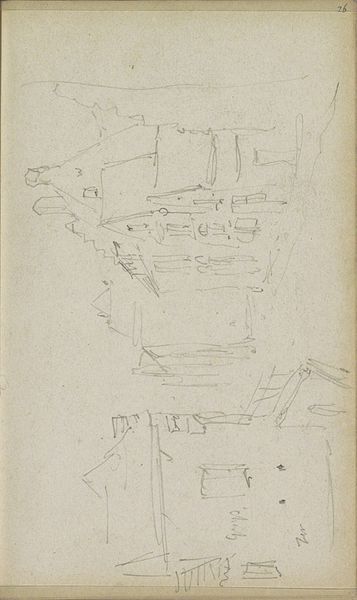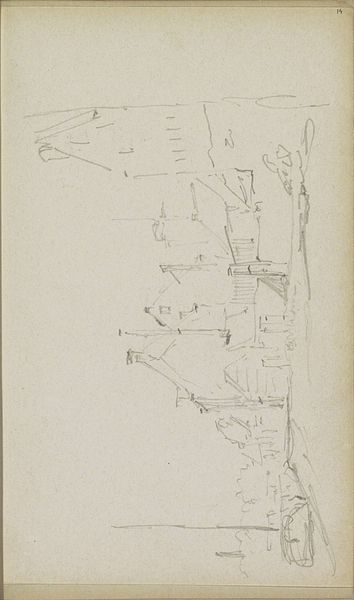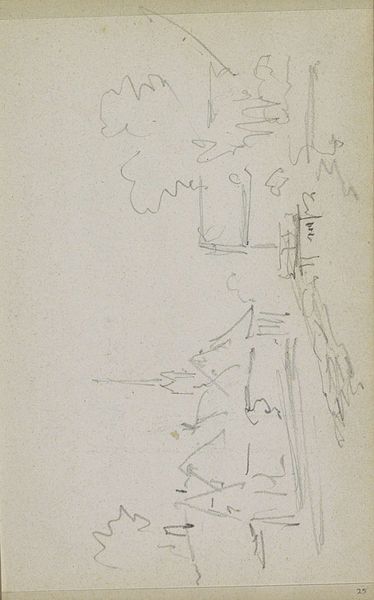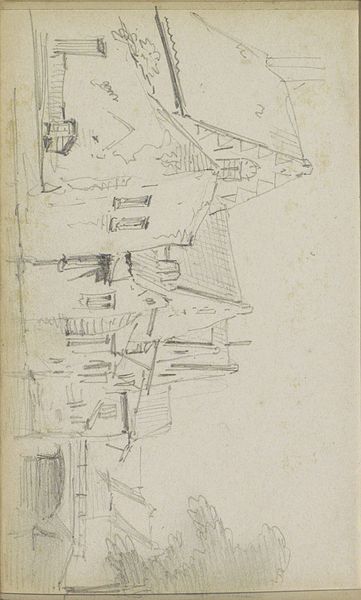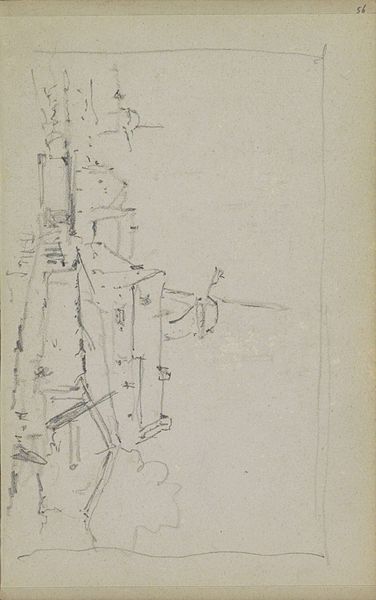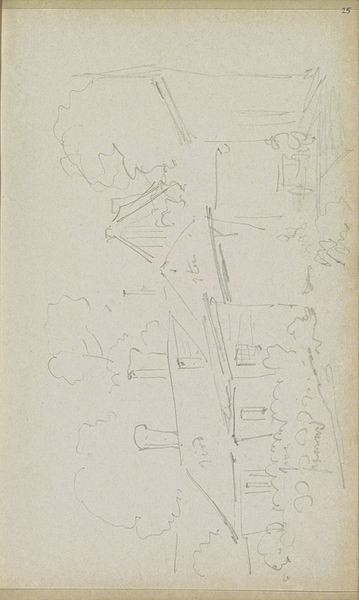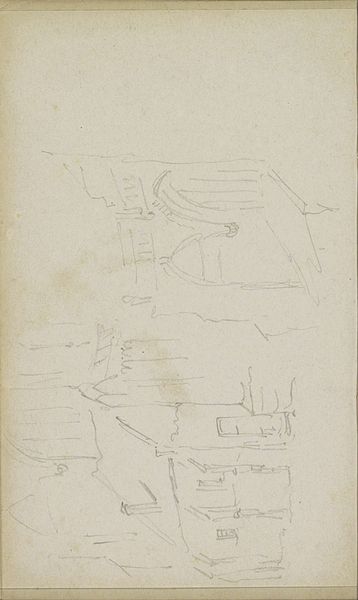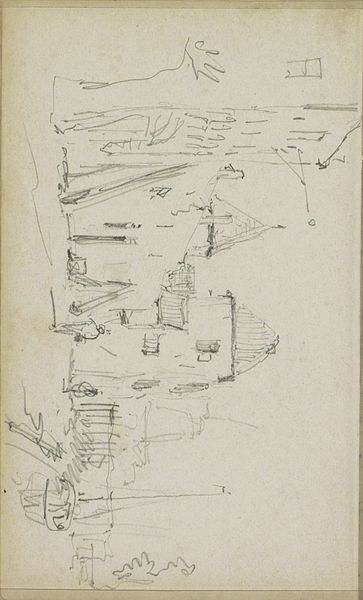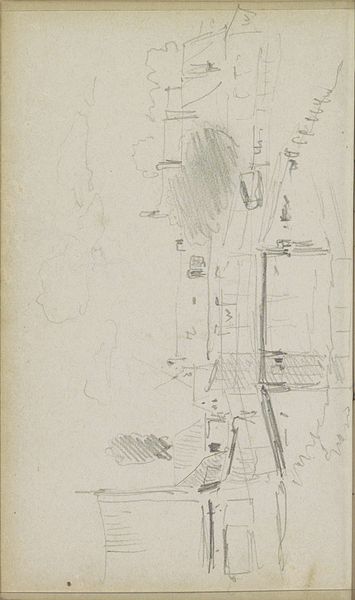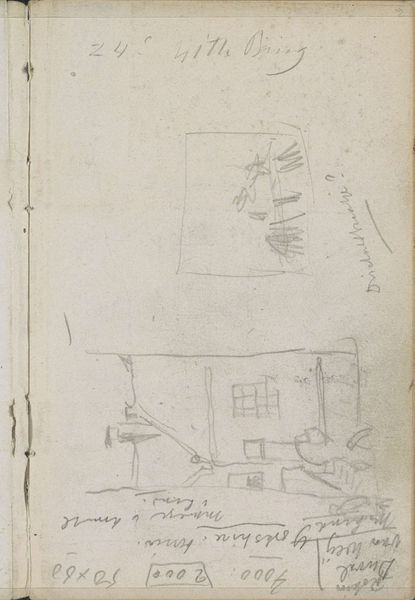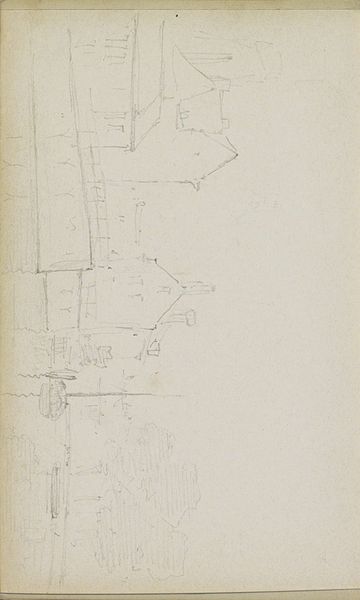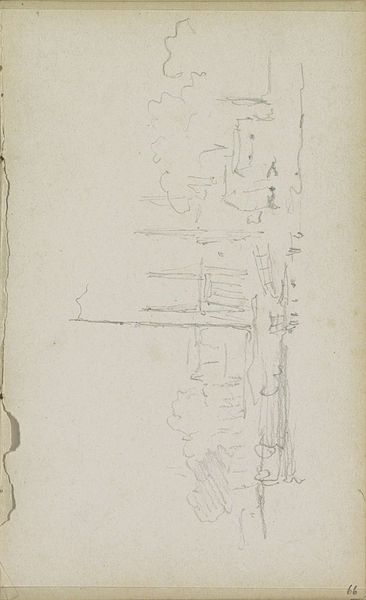
drawing, paper, pencil
#
drawing
#
paper
#
pencil
#
line
#
cityscape
#
street
#
realism
Copyright: Rijks Museum: Open Domain
Curator: At first glance, this preliminary sketch by Adrianus Eversen titled "Gezicht op een straat met een kerk" appears strikingly minimal and evokes a certain emptiness. The light pencil strokes barely capture a cityscape. Editor: Yes, there’s a ghostly quality to it. I find the sketch rather haunting. Eversen captures something essential here about the quiet desolation of urban spaces. Is there any historical context that might shed light on this feeling? Curator: Eversen created this sketch sometime between 1828 and 1897. Given this period, the societal context in Europe saw industrialization reshaping cities. Consider that many rural populations were migrating to urban centers, lured by industry; but, too, experiencing overcrowdedness and impoverished living conditions, leaving previously populated towns nearly abandoned. Editor: You’re drawing an interesting connection to larger sociological shifts. Structurally, though, the drawing itself is fascinating in its starkness. Notice how Eversen reduces the architecture and environment to a skeletal outline, with particular focus on how lines articulate a certain structural bareness. What are we to make of his emphasis on line itself? Curator: Line work itself might highlight his realism and perhaps suggest a broader discourse on how artists used minimalism to depict a more sobering vision of reality and comment on contemporary societal circumstances. Editor: Well, by breaking it down through this lens, this study can teach us much about society during a transformative historical juncture. The technique almost forces you to confront the fundamentals, doesn't it? Curator: Agreed. In art history, the sketch is frequently overshadowed, considered secondary to the “final” artwork. Paying due respect to the artist's preliminary investigations opens up the way for richer sociohistorical perspectives that illuminate unseen aspects of artistic endeavors and the setting surrounding it. Editor: Yes, absolutely. Ultimately, it’s not just the subject but the raw approach, the artist's own hand in the composition, which delivers an immediate impression of place.
Comments
No comments
Be the first to comment and join the conversation on the ultimate creative platform.
